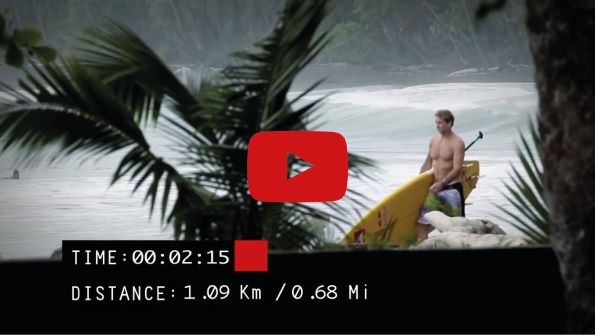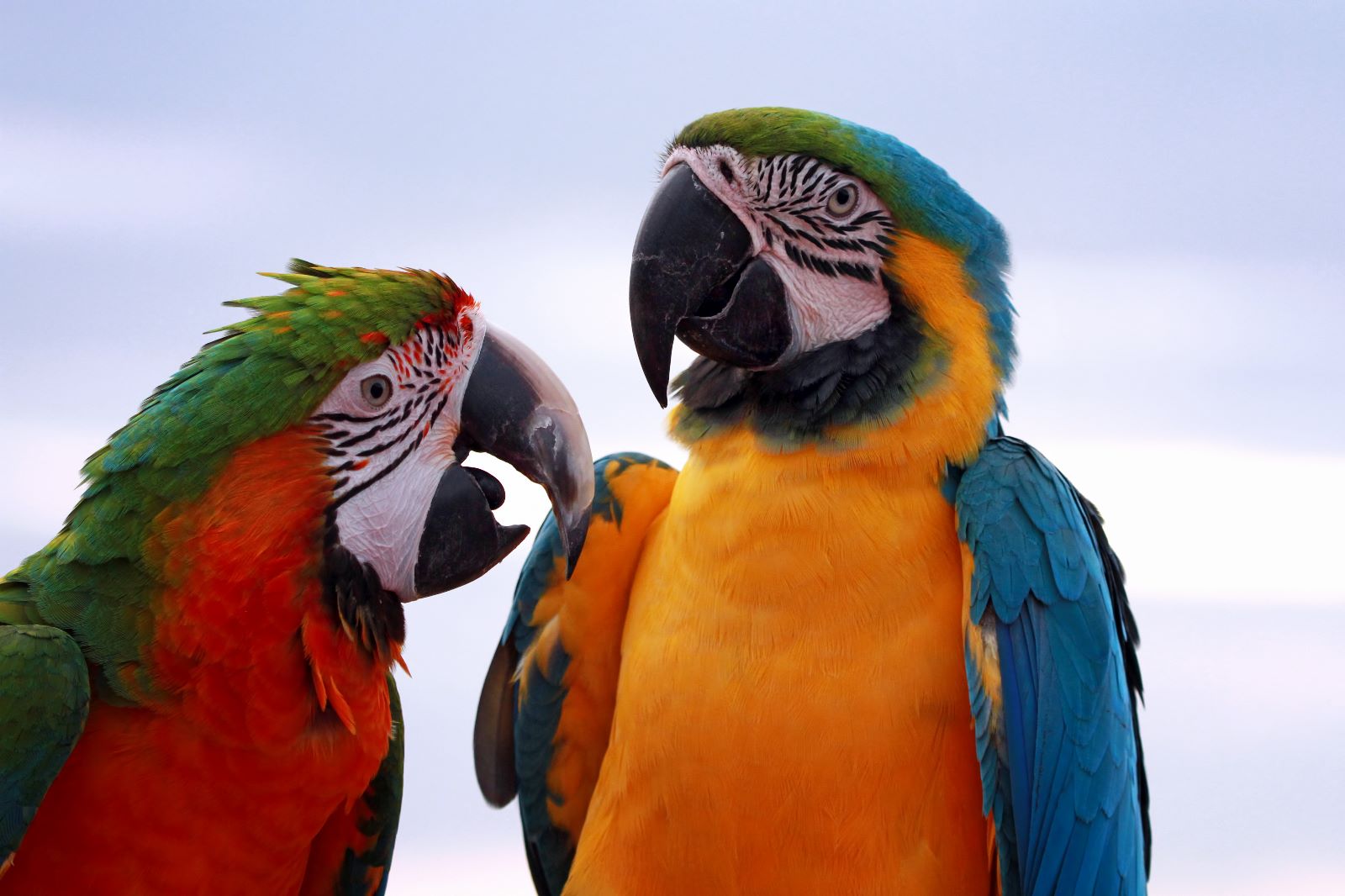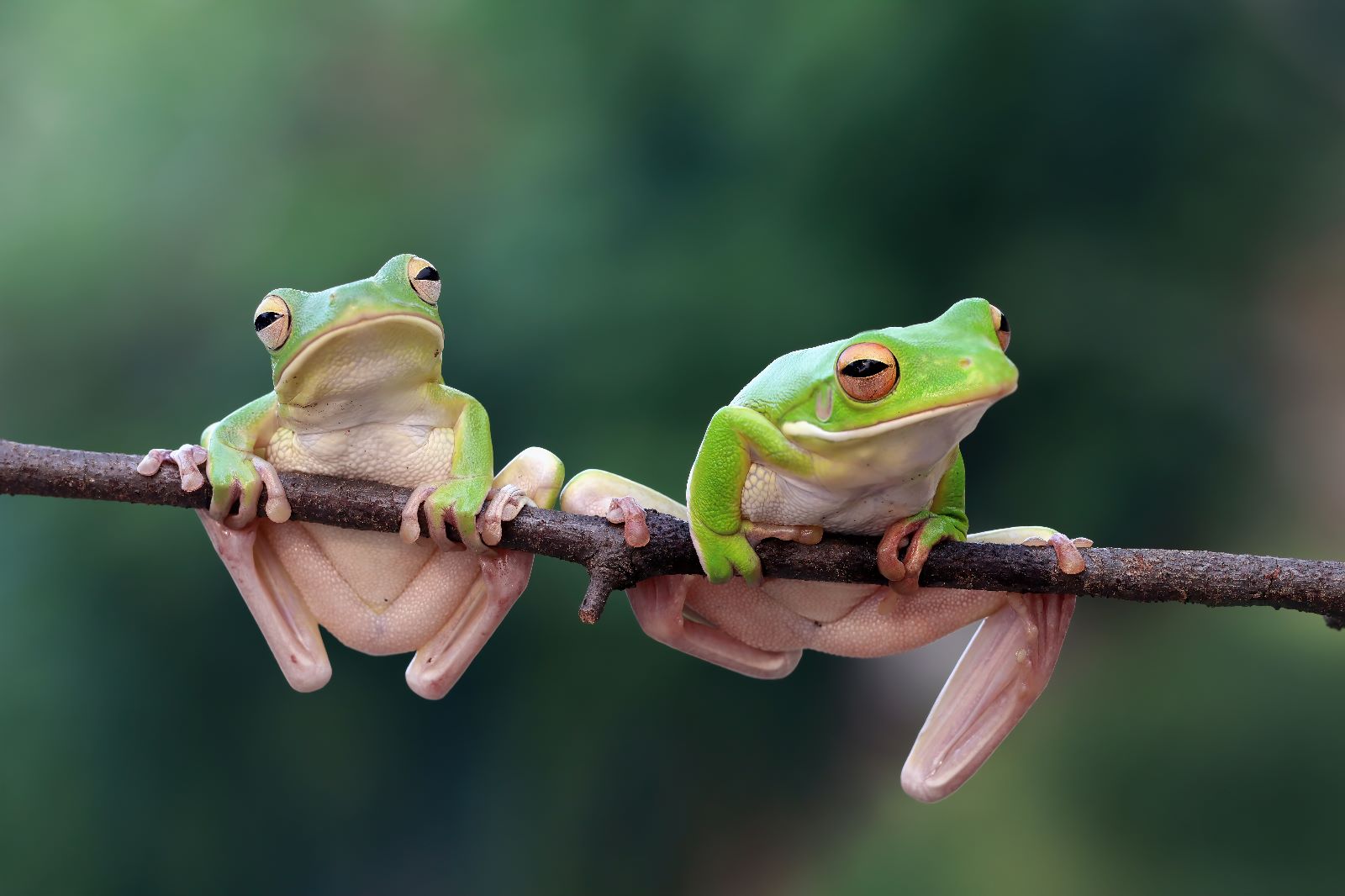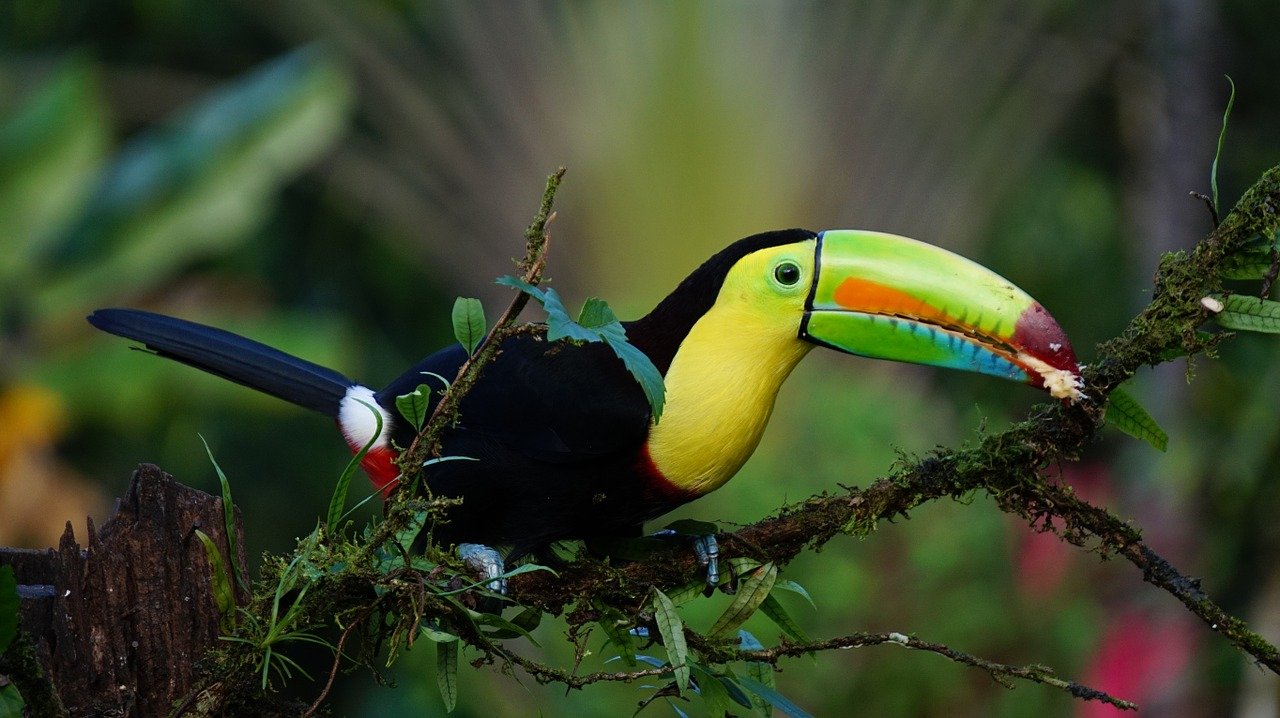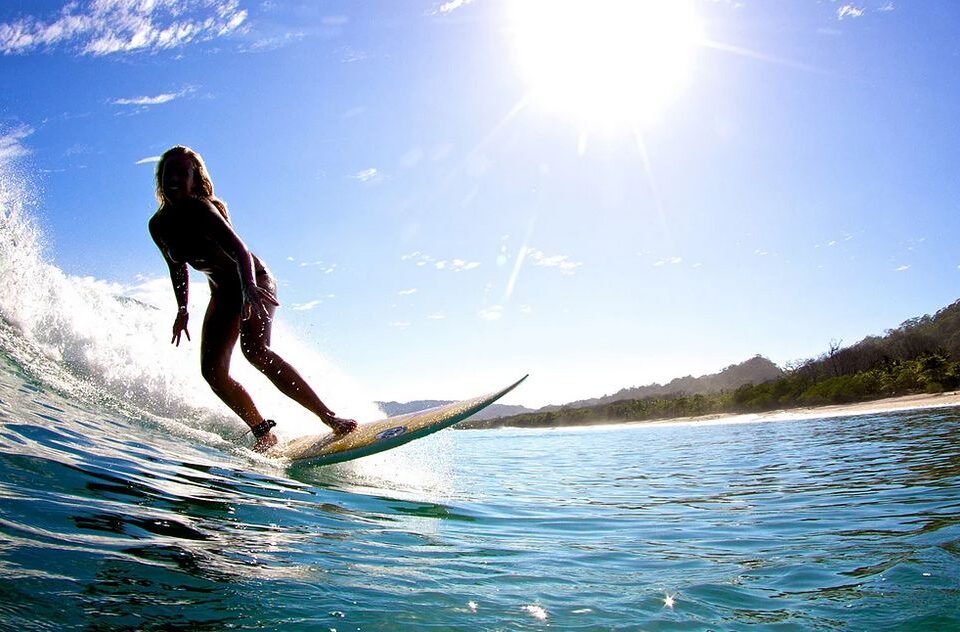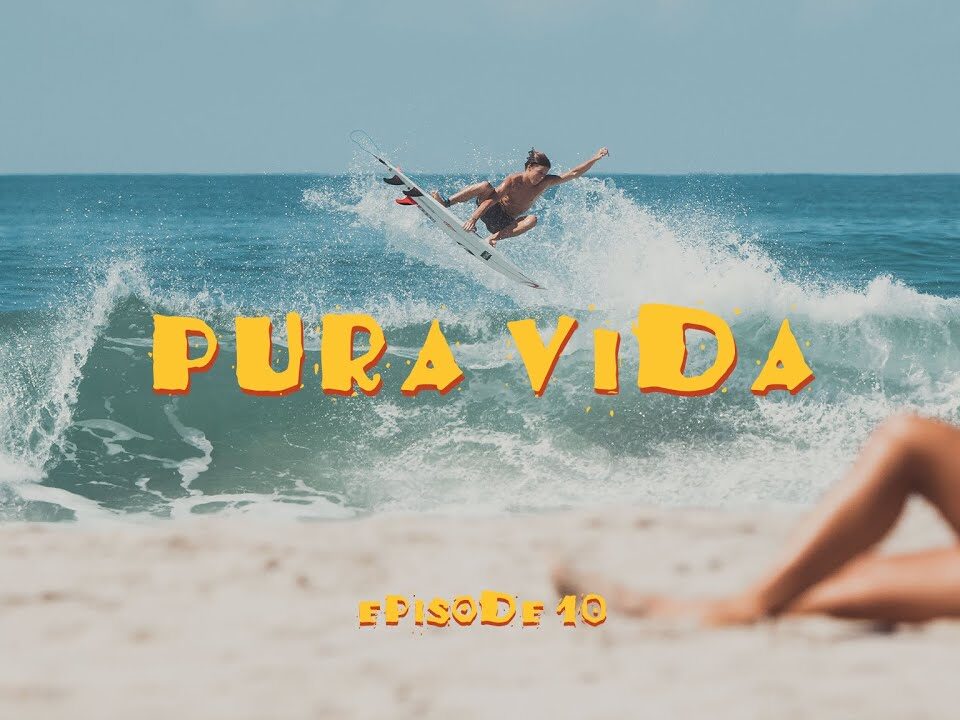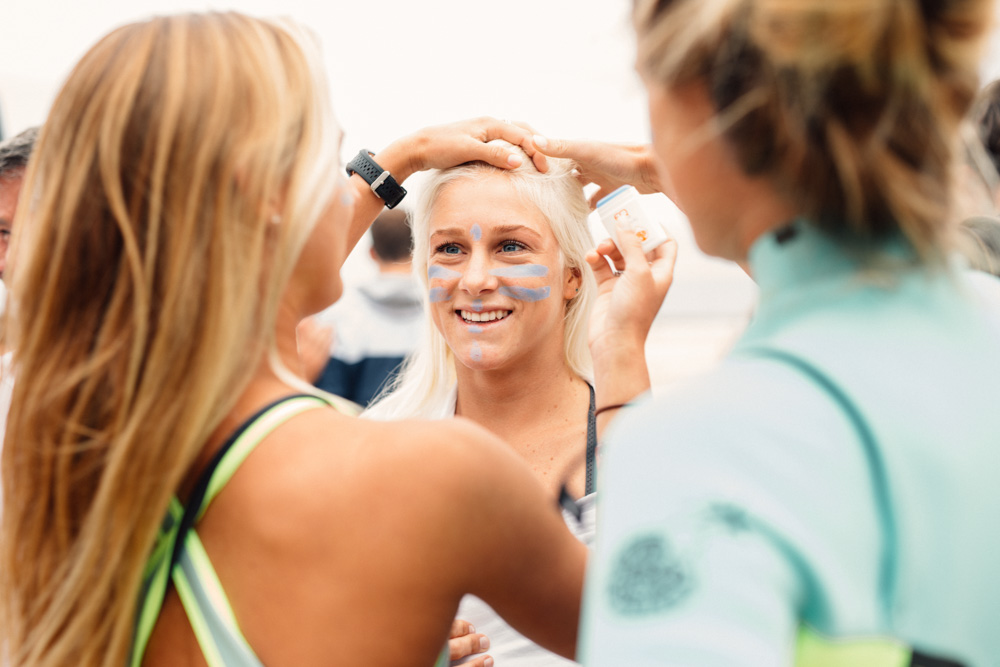
Eco-friendly sun creams to reduce our environmental impact
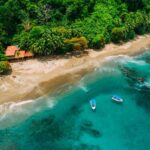
What to do in 15 days in Costa Rica ? Surftrip from Sta Teresa to Corcovado
Many more camps and ‘luxury villas’ will be added to our catalogue of camps in Costa Rica over the coming weeks, because we just love this destination and its ‘Pura Vida’ philosophy – road trip by Nicolas Mercadieu
Our last selected camp is in Pavones.
A mythical wave: 2.15 minutes of riding almost 1.1Km by Robby Nesh
Surfer Robby Naish travelled to Costa Rica in search of some of the longest waves in the world, which led him to the Pacific coast of the Central American country, specifically Pavones and Boca Barranca, which are famous destinations for wave enthusiasts.
According to Surf session magazine, “The spot is divided into three main areas: the point, at the very bottom; the mouth, in the middle; and the wall, the final section. Surfing just one of these sections is tantamount to catching very long waves. If you can link them together, you’ll have the longest lefts of your life!”
For surfers with less ambition, the spot is still affordable:
“Fantastic experience travelling in the South Pacific of Costa Rica, in Pavones. The Mecca of surfing, with the second longest left in the world” by Navegan2elmundo
Costa Rica has an authentic landscape of mountains, beaches and volcanoes. If you want to experience nature in its pristine state, Costa Rica is surely the destination par excellence. Its beauty is untamed and its riches unparalleled. This small American country, bordered by the Pacific to the west and the Atlantic to the east, promises a change of scenery and sunshine. Travellers in search of the exotic are sure to love it here. As for aficionados of surfing and board sports, the size of its oceans guarantees the best spots. And off you go for a Pura Vida holiday in Costa Rica!
Contenus de la page
The best spots on the Pacific coast
Tico country is undoubtedly the top destination for surfers. With its abundance of beaches, the choice of spots couldn’t be wider elsewhere. The Pacific coast offers the best places to start surfing and make rapid progress.
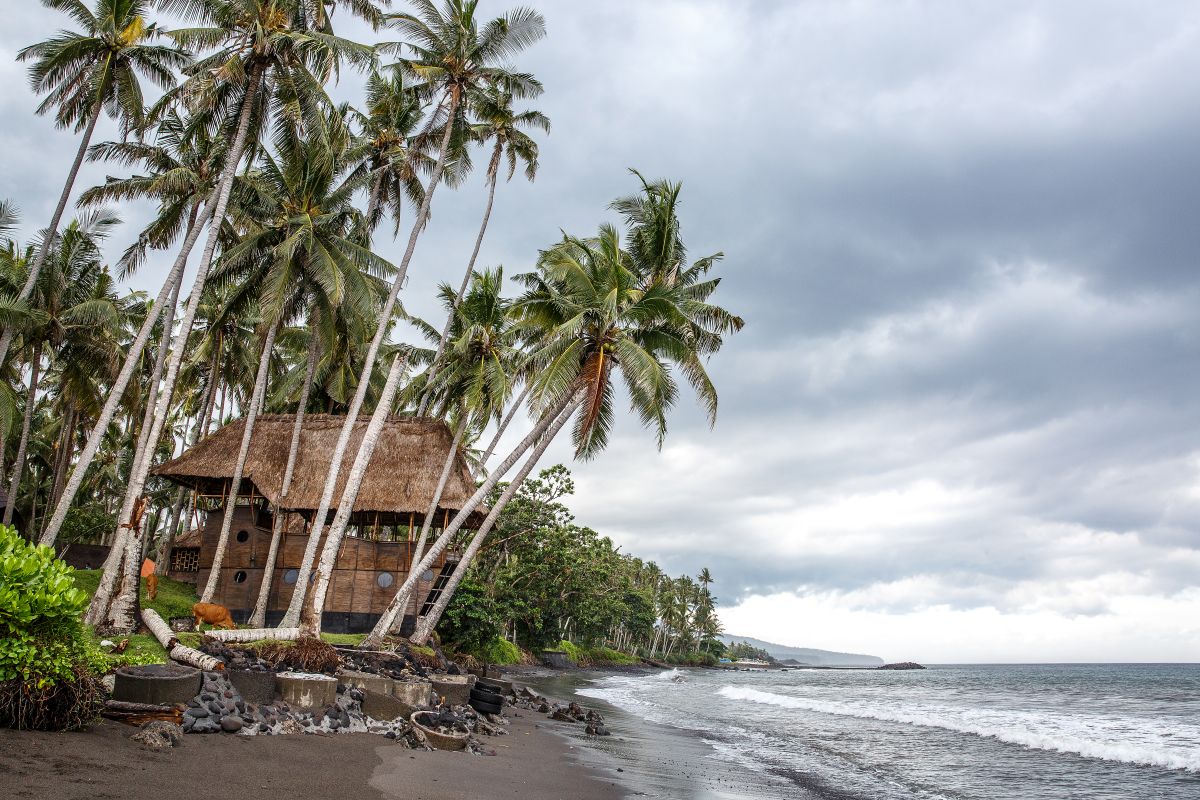
The shore of the ocean. A house in the jungle is bordered by water. Volcanic black sand. Bali island
Pavones, a paradise for wave lovers
Non-surfers visiting Pavones will immediately be captivated by its lush vegetation. The greenery is incredible, providing shelter for an unimaginable variety of flora and fauna. Situated in the south of the country, in particular in the canton of Golfito de Puntarenas, this region is the starting point of any trip to Costa Rica.
But surfers go there mainly for its 800m of continuous waves. Indeed, Pavones is a cult surfing spot. With a worldwide reputation, it boasts the best waves in Latin America, along with Chicama in Peru. Its strong breaking waves sweep across its grey sand and welcome surfers’ boards.
The icing on the cake is the region’s abundance of charming accommodation, ideal for surfers looking to get their feet wet.
Uvita, the little frontier
Uvita is the pearl of the Pacific, lost in Costa Rica. It’s an unlikely combination of jungle, mountain and sea. This island is well known for its mangrove ecosystem, the largest in the country. Which makes it the ideal place to observe wildlife. Did you know? Costa Rica’s famous Corcovado is located in Uvita. It is the country’s largest national park and is renowned for its astonishingly rich biodiversity. While Costa Rica represents around 5% of the world’s biodiversity, Corcovado alone accounts for 2.5%. Hiking through the park will allow you to explore the animal life in all its splendour.
As well as the intrinsic beauty of the island, its inhabitants are known for their unrivalled hospitality. You’ll love rubbing shoulders with them and sharing their daily lives. If you opt for a 2 or 3 week stay, you’ll have plenty of time to get to know the locals and create some unforgettable memories.
But Uvita beach is also a surfing spot where beginners and families gather to enjoy the sport. The waves are fast, hollow and powerful, breaking over living reefs of varying depths. During your surfing lessons, there’s every chance of spotting humpback whales. However, to see these cetaceans, you need to go from mid-July to mid-November or mid-December to April.
A word of warning: these sumptuous landscapes are not without their dangers! As this is an encounter with nature in its wild state, some coasts are particularly unadvisable. In addition, you need to be extra careful on certain beaches that are not properly supervised. If you’re coming as a family, the safety of children on the beaches is paramount.
Quepos, a mecca for water sports activities
Just 3 hours from San José, Quepos is renowned for its sport fishing. In fact, its seabed is rich in snapper, yellowfin tuna, snapper and roosterfish. So it’s hardly surprising that whale watching is one of the island’s best tourist attractions. These magnificent cetaceans never fail to delight tourists, putting on grandiose shows as they pass along the Pacific coast.
Its idyllic turquoise waters are arguably its greatest strength. Yes, Quepos is synonymous with relaxing holidays and surfing sessions. The waves are gentle and the conditions ideal for discovering and practising this sport. The best beaches in Quepos include Espadilla Norte, Matapalo, Gemela and Espadilla Sur. To recharge your body with adrenalin, don’t forget to take your board along to ride the waves.
Since you’re already in a land spoiled by Mother Nature, make the most of your visit to the surrounding parks, such as Manuel Antonio. This reserve is medium-sized, but packed with animals. An excursion along the footpaths is a must.
Jaco, surf and nightlife
The town of Jaco is a bit of a departure from our idea of wild and authentic Costa Rica. It has countless buildings, shops and hotels, which explains its lively nightlife. However, all you have to do is head for the sandy Pacific coast to enjoy the calm of the sea breeze. Its rocky grey sand beaches are a much sought-after playground for surfers. The waves are perfect, especially on the Hermosa beach. However, other beaches such as Bahia de Herradura are also well worth a visit.
If you’ve come to Costa Rica with the idea of learning to surf, Jaco is the perfect destination. For the simple reason that it’s a very popular spot, you’ll be able to benefit from real guidance.
What’s more, there’s nothing to stop you discovering the area’s natural riches by visiting Carara National
Park, for example. However, Jaco in Costa Rica is a recommended destination for families, as its tourist attractions cater for young and old alike. Whether you’re a fan of board sports, a party-goer or a follower of lazy breaks, you’ll be fully satisfied.
Santa Teresa, let yourself be invaded by Pura Vida
We all dream of visiting this piece of paradise nestling between sea and forest. Santa Teresa, a village on a human scale on the Nicoya Peninsula. How many visitors have already decided to extend their stay in this little corner, so endearing is it. As for the locals, they are renowned for their hospitality.
Here, ecolodges take precedence over large infrastructures, as they blend seamlessly into the landscape. What could be better than charming accommodation to breathe in the national ‘Pura Vida’ air? There’s no shortage of interesting activities. From quad biking around the village to exploring the Montezuma waterfalls and swimming in the natural pools of Malpais, you’ll have a packed schedule.
But above all, you’ll be doing one surf session after another. If many seasoned surfers come here to train, it’s because the conditions are excellent. As for beginners and intermediates, they’re in for an unparalleled adventure. One of the best-known surf spots in Santa Teresa is La Lora. What a pleasure to feel the white sands under your feet! What’s more, the waves are good almost all year round. For those who dream of big swells, Playa Santa Teresa and Suck Rock are more recommended. Here, you can expect waves up to 6 metres high.
Tamarindo, Costa Rica’s No. 1 surfing destination
Playa Tamarindo boasts one of the most beautiful ecological paradises in Guanacaste. This is the Las Baulas National Marine Park. As a result, it has become a veritable benchmark for tourism, both nationally and internationally. The beach is fed by the crystal-clear waters of Tamarindo Bay. This allows it to preserve the best marine ecosystems in the region.
Thanks to its outstanding marine beauty, you can indulge in a wide range of water sports, including diving, snorkelling and, above all, surfing. The Tamarindo spot is fairly regular, with different types of break. You can enjoy beach breaks and point breaks. These conditions are ideal for beginners and intermediates to discover surfing and gradually improve their skills.
Surfers will benefit from east and south-easterly winds and westerly swells. To get the most out of this adventure, our advice is to choose a longboard as your equipment. Between two wonderful surf sessions, you’ll love sunbathing like a cetacean washed up on the beach.
Witch rock, the waves of Pena Bruja
International tourists are used to calling this beach ‘Witch Rock’, but for the locals it is more commonly known as Pena Bruja, Roca Bruja or Naranjo. Located not far from Tamarindo, it is also in the province of Guanacaste. Get ready to discover an idyllic beach nestling in a secluded natural setting, particularly close to the mangrove swamps. The setting is magnificent, with clear waters and fine sands embroidered with lush forests.
For your information, Naranjo owes its name to the huge rock that stands in the middle of the water and shapes the direction of the waves. The waves here are long and powerful, offering unrivalled, anthological sessions. For less experienced surfers, this spot has both lefts and rights.
That said, witch rock is a great destination for budding surfers looking for their first lessons in Costa Rica. As an added bonus, you’ll be learning your favourite board sport in a dream location.
Guiones beach: an ultra-fun beach break
Without leaving the province of Guanacaste, a dream beach called ‘Guiones’ awaits surfers in Costa Rica. It’s on the Nicoya Peninsula, on Costa Rica’s west coast. You’ll find a vast sandy surface stretching for 7 km. This spot promises a multitude of breaks thanks to its highly exposed location. In fact, the beach catches all the small Pacific swells, making it easy for beginners to glide across the waters. Intermediates will also be delighted to surf at high or low tide.
In terms of atmosphere, the small town of Nosara, where Guiones beach is located, is widely known as a destination with a surfing community. There’s nothing better than eating grilled fish and seafood with the locals while chatting surf!
Generally speaking, the wet season is the best time to take advantage of the ultra-strong swells. This period runs from September to May. However, Nosara is a real ‘swell magnet’, so surfing is possible almost all year round. In any case, we strongly recommend that beginners and intermediates prefer the dry season to use their boards. The conditions are better suited to their level.
Dominical beach, between jungle and ocean
This small village on the Pacific coast attracts surfers from all over the world like a magnet. In Dominical, the national expression ‘Pura Vida’ has never been truer. The town flows peacefully and the atmosphere is calm, disturbed only by the hum of the waves on the coast. Its beach is a long stretch of sand dotted with pebbles and adorned with palm trees. If you wish, your visit to this small fishing village can be punctuated by surfing lessons. There is no shortage of surf schools in the area. And if you haven’t brought your own board and wetsuits, you’ll be spoilt for choice with the equipment available for hire.
As well as surfing, you can also enjoy a stroll through the small centre of Dominical. On the agenda: endless swimming (if the powerful waves don’t scare you) and fresh fish tasting. For a relaxing holiday, Dominical beach in Costa Rica is a must. It’s also a great place to make friends with the locals.
The town centre of Dominical is also home to small shops and souvenir stands where you can buy gifts for your loved ones.
The best spots on the Caribbean coast
Costa Rica’s Caribbean coast gives you access to powerful, choppy waves almost all year round. It is sometimes overlooked by holidaymakers in favour of the Pacific coast, where the surf spots are even more marvellous. What’s more, it is less invaded by mass tourism. That said, come and discover the most beautiful spots on the Caribbean coast and the interesting activities in the surrounding area!
Playa Negra, discover Costa Rica’s clear waters
When you think of the Caribbean, the image of turquoise waters, immense beaches and water sports immediately springs to mind. On its sandy coasts, you can alternate surfing, lounging and other activities that are well worth the diversions. In any case, surfing is the country’s national sport, given the beautiful waves of Latin America. If you want to try your hand at surfing, head for Playa Negra. This spot is renowned for the perfect waves provided by its currents.
In addition to the power of the waves, the scenery is spectacular and authentic. In fact, the fine sand embellished by steep rocks and typical vegetation creates a breathtaking picture. To get closer to nature, it’s a good idea to visit the surrounding unspoilt natural areas, such as the Cahuita National Park. The strength of this spot lies in its proximity to other magnificent beaches such as Blanca, Callejones and Avellana.
The only downside is that the spot has to be earned, as the road is treacherous. However, the poor quality of the road has not managed to discourage surfers, who don’t hesitate to hire high-performance cars to access the beach.
Practical information: there is a wildlife rescue centre close to Playa Negra, which is well worth a visit.
Salsa Brava, a Costa Rican treasure
The spots along the Costa Rican Caribbean coastline are excellent for surfers who want to dominate the balance on high waves. Salsa Brava is one of the best-known spots in this region. This one guarantees a reef break producing very hollow waves. The fact that this beach has this type of wave is entirely down to its typical geographical position. In fact, Salsa Brava is immersed in two different waters. Firstly, the Pacific Ocean on the western side and then the Caribbean Sea on the eastern side.
According to surfing experts, the waves at Salsa Brava are Hawaiian and therefore dangerous. The waves come from deep water before breaking into the coral reef. In December and January, they are 8m high. If you are a beginner, professional supervision is highly recommended. In any case, it’s best not to learn to surf on the Salsa Brava spot.
On the other hand, you can still enjoy the unrivalled scenery of this beach. What’s more, you’ll get some of your best shots here, with big waves in the background.
Tortuguero, surfing alongside turtles
Tortuguero is literally the village where the turtles lay their eggs. Located in the north of the Caribbean coast, it is difficult to access. The only way to get there is by boat or plane. Once you arrive at the national park, a breathtaking spectacle awaits you. The ‘little Amazon’ is the nickname of this village, and it lives up to that name with its impressive vegetation. Watching the wildlife in their sanctuary is always sensational.
But Tortuguero is much more than a turtle nest. It’s also 35 km of beaches with beautiful waves, some of which run alongside the village. The surf spot here is an exposed beach break with constant waves. Gusts are also frequent, promising waves left and right.
However, care must be taken when surfing this spot, as the dangers include jellyfish.
Playa Cocles, the surfers’ oasis
A spectacular surf beach nestling to the south of Puerto Viejo, Cocles is the ideal place to spend some quality time with the family. People choose this stretch of the Caribbean coast to spend peaceful days away from the crowds of tourists. It’s also a small seaside town with a series of beach breaks.
The advantage of the Playa Cocles spot is that the waves are constant all day long. However, if you want to learn to surf, it’s best to go at half-high tide.
Bonita Beach, enjoy the bay of Limon
This is the closest spot to San José! Playa Bonita is a coral reef that is a favourite with surfers. The waves come in the form of swells and promise fantastic surfing sessions. The conditions are just right for you to indulge in your favourite surfing sport. However, its perfect waves attract surfers from all over the world. As a result, the beach is packed most of the time.
The waves are excellent during the dry season. Obviously, surfing aficionados also prefer this time of year. So expect to meet new people during your introduction to surfing.
Los Tumbos, surfing in the Caribbean
To the south of Bonita beach lies this magnificent surf spot. This world-class beach to the north of Limon is especially popular with experienced surfers. The truth is that its waves are ultra-powerful and fast. It’s not uncommon to come across surfers breaking their boards while playing on this Caribbean coast.
In this area, you can even expect big waves up to 3m high. These then roll out over almost 300m. The good news is that access to Los Tumbos is not at all difficult. Families looking for a good time are more than welcome.

